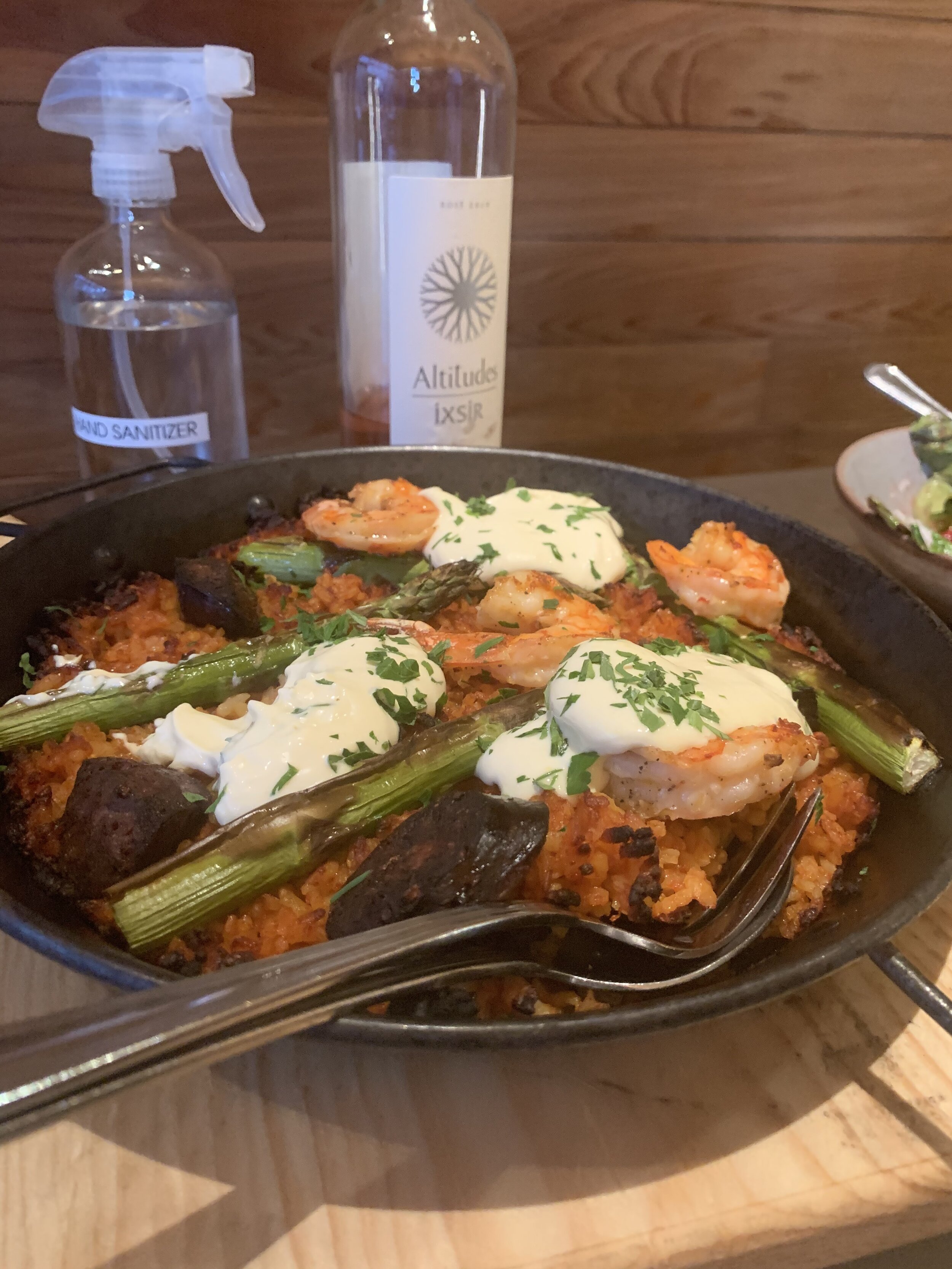For the foreseeable future I’ll be using this space to keep track of my home cooking. After spending so many years as a newspaper food columnist as well as a reviewer, I do like to share my cooking. Facebook has been a good place to do this, but I worry that I’m doing it so much these days that it’s starting to come off as thirsty — i.e., doing it more for the likes and social media profile raising rather than for the pleasure of reaching out to friends and colleagues.
But the benefit of home confinement has been its effect on my cooking. I feel like I’m really integrating the different chapters of my past as a cooking student, pantry cook, line cook, chef, traveler, ex-pat, dad to a young family, dad to teenagers, even my way, way back-there past as an unpopular fat kid who came home after school and attempted cooking projects out of his mom’s “Women’s Day Encyclopedia of Fine Cookery.” I made marshmallows.
I’ve been cooking so much and establishing the kind of daily rhythm in my kitchen that has long been missing. I cannot keep enough onions, anchovies, carrots, thyme, spring onions (yes, the roots are in water), ginger, garlic and bacon. The white vermouth has moved from the bar where it never was put to work making martinis to the stove, where it cuts through the smell of fish and subs in for Chinese cooking wine and sake.
I’ve been buying meat from Local Foods, a market with a butcher that sources meat from the best local farms and — so, so important — vacuum packs each item individually. It keeps fresh for so long. That way, I can start with the veggies and various bits and bobs that need using up and then decide on the protein.
I’m making lots of crusty, craggy bread and almost no desserts. (But eating ice cream, Oreos and tangerines, and making nice yogurt parfaits midday.) So much miso soup and rice.
I’m toggling back and forth between Japanese-style and Western-style meals. The former is usually a variation on ichiju sansai — three random, differently prepared dishes served with rice, soup and pickles. So satisfying and such a good way to cycle through leftovers. The latter has generally consisted of plates of pulses, vegetables and protein with flavors that go together.
I’m so grateful that the 18 months I lived in Japan has so marked my cooking life, but my basic idiom is Mediterranean. I’ve been making so many soffritos and so much mirepoix — starting the evening with carrots, onion and celery sizzling in a pan. I’m really spending the time that I had stopped allowing myself over the years, letting the vegetables shrink and color in the oil, letting the tomato paste fry, and the garlic, or bacon, or anchovy, letting the flavors deepen and built.
That’s how the meal pictured came together. It started with the lentils. I had a bag of curly-leaf spinach that was so good steamed and finished with a dab of butter and some salt. I espied a vacuum-sealed bag with two legs of duck confit that I ran under the broiler until the skin crisped. Finally, leaving the broiler on, I cut the heel of my homemade bread into croutons and spread them with the dregs of some not-very-good goat cheese. This unplanned meal came together well enough that it seemed worth a trip to the cellar for a nice pinot noir.
Braised Lentils
2 strips bacon
2 tablespoons olive oil
1 small onion, diced
1 medium carrot, diced
1 stalk celery, diced
1 sprig thyme
1 tablespoon tomato paste
1 teaspoon Dijon mustard
about 2 cups lentils, rinsed and picked over
about 5 cups chicken stock
salt, pepper and MSG to taste
Place bacon in a large sauteuse, cover with water and bring just to the boil over heat. Take out bacon and dice. Wipe out pan, return to heat and add olive oil. Add diced bacon, vegetables and thyme sprig. Cook, stirring now and again, over medium-low heat for a good 20-30 minutes, until veggies have shrunk and turned the palest tan. Add tomato paste and fry. Turn up heat a smidge, and just when onions start to brown, hit them with the chicken stock. Scrape the bottom of the pan and add the lentils. Bring to a boil, reduce to a good simmer with the cover on. Add mustard and seasonings. Check and stir periodically. They should be tender but still firm enough to hold their shape, and they should have absorbed almost all of the stock. If they need more stock, add more and continue cooking until yumminess happens.
















